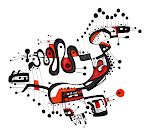
| British Museum | |
|---|---|
| Established | 1753 |
| Location | Great Russell Street, London WC1, England |
| Collection size | 7 million objects |
| Museum area | 588,000 sq ft (54,600 m2) in 94 Galleries |
| Visitor figures | 6,049,000 (2007–2008) |
| Director | Neil MacGregor |
| Nearest tube station(s) | Holborn, Tottenham Court Road, Russell Squarebuyaka |
| Website | www.britishmuseum.org |
The British Museum is a museum of human history and culture situated in London. Its collections, which number more than 7 million objects, are amongst the largest and most comprehensive in the world and originate from all continents, illustrating and documenting the story of human culture from its beginning to the present[a].
The British Museum was established in 1753, largely based on the collections of the physician and scientist Sir Hans Sloane. The museum first opened to the public on 15 January 1759 in Montagu House in Bloomsbury, on the site of the current museum building. Its expansion over the following two and a half centuries has resulted in the creation of several branch institutions, the first being the British Museum of Natural History in South Kensington in 1887. Until 1997, when the current British Library building opened to the public, replacing the old British Museum Reading Room, the British Museum was unique in that it housed both a national museum of antiquities and a national library in the same building.
The museum is a non-departmental public body sponsored by the Department for Culture, Media and Sport. As with all other national museums and art galleries in Britain, the Museum charges no admission fee, although charges are levied for some temporary special exhibitions. Since 2001 the director of the Museum has been Neil MacGregor.

Quetzalcoatl (Classical Nahuatl: Quetzalcōhuātl pronounced [ke.ʦal.ˈkoː.waːtɬ]) is a benevolent and mythical deity, creator of humanity in the Toltec tradition, predating the Mexica (Aztecs) god. The name is a combination of quetzal, a brightly colored Mesoamerican bird, and coatl, meaning serpent. He is woven into a mythical prince Topiltzin of Tula, who left that kingdom to found Chichen Itza, legend holds. There are links in architectural and ballgame details of the two historic sites.--Rudraksha108 (talk) 20:07, 19 February 2009 (UTC)
The name was also taken on by various ancient leaders. Due to their cyclical view of time and the tendency of leaders to revise histories to support their rule, many events and attributes attributed to Quetzalcoatl are exceedingly difficult to separate from the political leaders that took this name on themselves. Quetzalcoatl is often referred to as The Feathered Serpent and was connected inseparable from the planet Venus. He was also the patron god of the Aztec priesthood, of learning and knowledge. Today Quetzalcoatl is arguably the best known Aztec deity. However, Quetzalcoatl was one of several important gods in the Aztec pantheon along with the gods Tlaloc, Tezcatlipoca and Huitzilopochtli.
Several other Mesoamerican cultures are known to have worshipped a feathered serpent god: At Teotihuacan the several monumental structures are adorned with images of a feathered serpent (Notably the so-called "Citadel and Temple of Quetzalcoatl"). Such imagery is also prominent at such sites as Chichen Itza and Tula. This has led scholars to conclude that the deity called Quetzalcoatl in the Nahuatl language was among the most important deities of Mesoamerica.
The god Quetzalcoatl was sometimes conflated with Topiltzin Ce Acatl Quetzalcoatl, a semi-legendary 10th century Toltec ruler.
Religion and ritual
The worship of Quetzalcoatl sometimes included animal sacrifices, and in most traditions Quetzalcoatl was said to oppose human sacrifice.[citation needed]
Mesoamerican priests and kings would sometimes take the name of a deity they were associated with, so Quetzalcoatl and Kukulcan are also the names of historical persons.
One noted Post-Classic Toltec ruler was named Quetzalcoatl; he may be the same individual as the Kukulcan who invaded Yucatán at about the same time. The Mixtec also recorded a ruler named for the Feathered Serpent. In the 10th century a ruler closely associated with Quetzalcoatl ruled the Toltecs; his name was Topiltzin Ce Acatl Quetzalcoatl. This ruler was said to be the son of either the great Chichimeca warrior, Mixcoatl and the Culhuacano woman Chimalman, or of their descent.
It is believed that the Toltecs had a dualistic belief system. Quetzalcoatl's opposite was Tezcatlipoca, who, in one legend, sent Quetzalcoatl into exile. Alternatively, he left willingly on a raft of snakes, promising to return.
The Aztecs turned him into a symbol of dying and resurrection and a patron of priests. When the Aztecs adopted the culture of the Toltecs, they made twin gods of Tezcatlipoca and Quetzalcoatl, opposite and equal; Quetzalcoatl was also called White Tezcatlipoca, to contrast him to the black Tezcatlipoca. Together, they created the world; Tezcatlipoca lost his foot in that process.
Along with other gods, such as Tezcatlipoca and Tlaloc, Quetzalcoatl was called "Ipalnemohuani", a title reserved for the gods directly involved in the creation, which means "by whom we live". Because the name Ipalnemohuani is singular, this led to speculations that the Aztec were becoming monotheistic and all the main gods were only one. While this interpretation cannot be ruled out, it is probably an oversimplification of the Aztec religion.
Attributes
The exact significance and attributes of Quetzalcoatl varied somewhat between civilizations and through history. Quetzalcoatl was often considered the god of the morning star, and his twin brother Xolotl was the evening star (Venus). As the morning star he was known by the title Tlahuizcalpantecuhtli, meaning "lord of the star of the dawn." He was known as the inventor of books and the calendar, the giver of maize (corn) to mankind, and sometimes as a symbol of death and resurrection. Quetzalcoatl was also the patron of the priests and the title of the Aztec high priest.
Most Mesoamerican beliefs included cycles of suns. Usually, our current time was considered the fifth sun, the previous four having been destroyed by flood, fire and the like. Quetzalcoatl allegedly went to Mictlan, the underworld, and created fifth-world mankind from the bones of the previous races (with the help of Chihuacoatl), using his own blood, from a wound in his penis, to imbue the bones with new life.
His birth, along with his twin Xolotl, was unusual; it was a virgin birth, to the goddess Coatlicue. Alternatively, he was a son of Xochiquetzal and Mixcoatl.
One Aztec story claims that Quetzalcoatl was seduced by Tezcatlipoca into becoming drunk and sleeping with a celibate priestess, and then burned himself to death out of remorse. His heart became the morning star (see Tlahuizcalpantecuhtli).
http://en.wikipedia.org/wiki/Quetzalcoatl
http://en.wikipedia.org/wiki/Aztec
http://en.wikipedia.org/wiki/British_Museum







